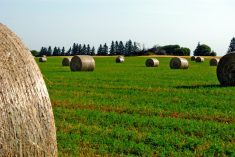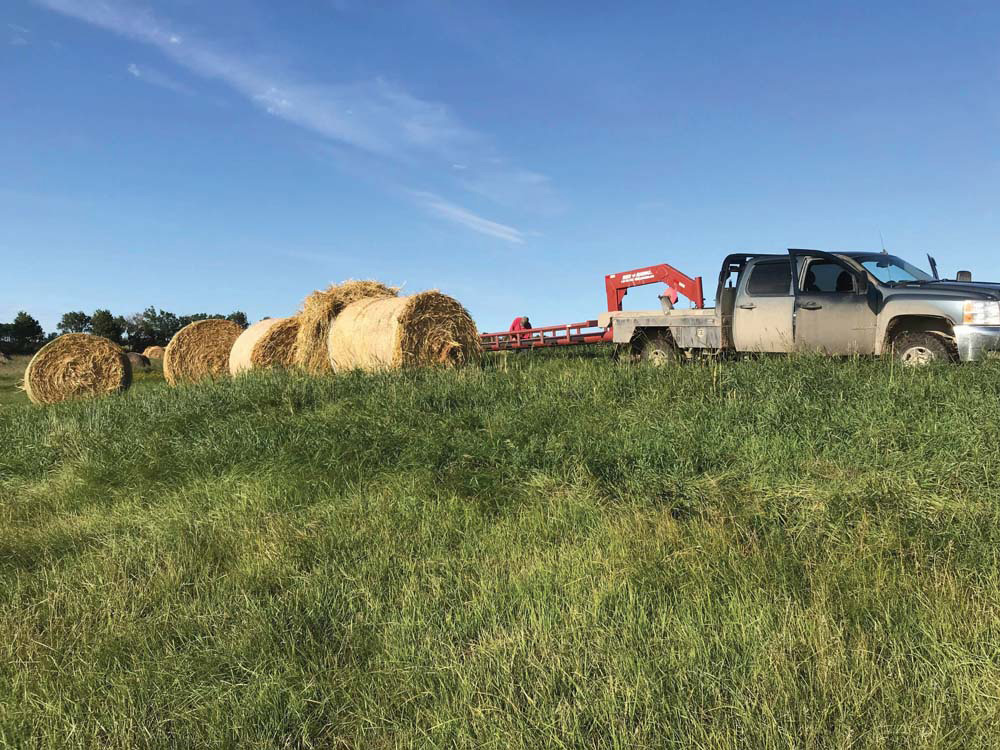When it comes to stacking bales, a little forethought can go a long way to ensuring a better product.
“Storage losses from improperly stacked bales can be anywhere from 15 to 20 per cent of the dry matter yield while protein and energy losses can be anywhere from five to 10 per cent,” said beef and forage specialist Barry Yaremcio. “You spend a lot of time putting up a good-quality hay, so why risk losing 10 to 15 per cent of your productivity by just not stacking the bales properly?”
Before bringing bales into the yard, mow the grass to reduce both moisture on the ground and soil-to-bale contact. The storage site should be on higher ground to prevent run-off from accumulating at the base.
Read Also

Growing Canada’s beef herd: CCA’s priorities working with new federal government
This is my first column since the federal election. The Canadian Cattle Association works with all elected officials and parliamentarians, regardless…
Yaremcio recommends leaving two to three feet between rows of bales and stacking them from northwest to southeast (or wherever prevailing winds come from).
“This way, when the snow comes, the wind will be able to blow away the moisture so it’s not between the bales come spring.”
When stacking bales in the field, the poorest method is the pyramid style (three bales on the bottom, two in middle, and one on top).
“If it rains after the stacks are made, or if snow melts during the winter, all that moisture will works its way through the stack from the top down, and cause spoilage wherever the bales contact each other,” said Yaremcio.
The mushroom stack (with the bottom bale flat and the second one on top) is better but still will end up with a lot of damage.
“The best method, however, if you have the space, is to put single bales in rows with the individual bales in the rows separated by about six to 10 inches so they don’t touch.”
If using a tarp, leave the ends open so air can blow between the tarp and bales.
“That way, the wind can carry any moisture that has evaporated out of the bales and condensed on the inside of the tarp away before it drops back onto the bales and causes damage.”
















